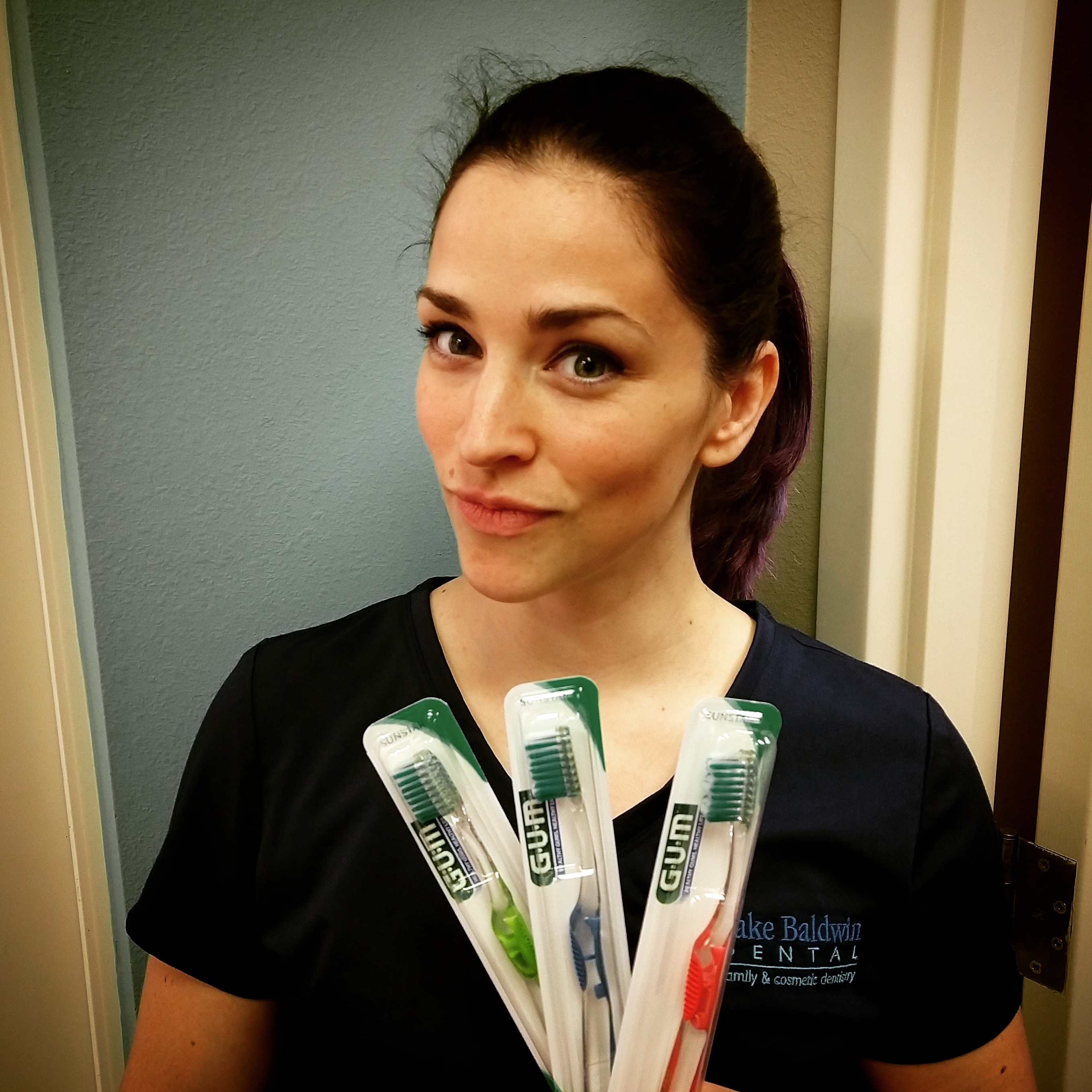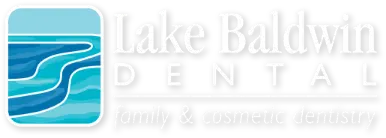You’ve probably been brushing your teeth since childhood, so you’re a pro by now. Right? You may be surprised, but knowing how to brush your teeth is surprisingly complex! Great home care is a cornerstone of good oral health. Here are 6 steps for how to brush your teeth properly for fresh breath, complete plaque removal, cavity prevention, and protection against gum disease.
1. Choose the Right Brush
When it comes to choosing the right toothbrush for you, the first decision you need to make is: electric or manual? There are pros and cons to electric toothbrushes as well as manual toothbrushes. In general, we’ve noticed that our patients who use electric toothbrushes (specifically the Sonicare) tend to have less plaque and healthier gums at their regular cleanings.
Electric toothbrushes are great for gum recession (and no, electric toothbrushes do not make gum recession worse). Manual toothbrushes are an excellent choice for patients who travel a lot. Either way, stick to soft bristles and be sure your brush is ADA approved. Your dental hygienist will be more than happy to help you figure out how to pick the right toothbrush for you.
2. Choose the Right Paste
Strictly speaking, you don’t have to use toothpaste to brush your teeth! The brush is doing the heavy lifting for removing plaque and bacteria from your mouth. Toothpaste is great for freshening your breath and delivering mineral supplements and therapeutic ingredients where you need them.
Fluoride toothpaste is an essential part of preventing cavities in adults and children. A daily topical supplement of this naturally occurring mineral helps to replenish the enamel where it has been weakened by acid from food and bacteria. Fluoride helps reduce and prevent tooth sensitivity, too!
There are so many toothpastes out there for a million different needs. In general, you want the least abrasive toothpaste possible. Anti-sensitivity toothpastes tend to be less abrasive overall, and Sensodyne has very low abrasiveness scores across all their different types of paste. Whitening and tartar control ingredients are super abrasive and can wear away at your enamel and gum tissue, and cause teeth to become sensitive. Plus, they don’t really work that well. If you want to whiten your teeth, there are better ways!
Avoid charcoal toothpaste, which is highly abrasive and poorly regulated. It may make your teeth look slightly whiter, but it does so by scraping stains off. It’s super rough on your gums and enamel. Likewise, brushing your teeth with baking soda is okay once in a while, but don’t make it your regular paste.
3. Floss Before Brushing
To be fair, it really doesn’t matter when you floss! However, we’ve found that flossing before brushing helps patients actually get the job done! Too often, brushing first helps your mouth feel fresh so flossing doesn’t feel quite as critical. Leave your floss out where you can see it, or even where you don’t have a choice but to pick it up before grabbing your toothbrush!
Flossing first has an added bonus of helping you get your money’s worth out of your toothpaste. If you have plaque and food between your teeth, your toothpaste can’t get into those areas to deliver fluoride and anti-sensitivity ingredients. But if you floss before brushing your teeth, you get all that crud out of the way so your toothpaste can do its best work!
4. How to brush your teeth correctly
When you’re ready to brush, the most important thing is to remember you’re not scrubbing grout! Always avoid putting too much pressure when you’re brushing. If your toothbrush ends up looking “frayed,” with the bristles curling outward after you’ve been using it for a few weeks, you’re pushing way too hard! You can try holding the brush with your fingertips or use your non-dominant hand. Sonicare toothbrushes also alert you to excess pressure, which is helpful.
For manual toothbrushes, set your bristles at the gum line, angled toward the gums at about 45 degrees. Do a small “jiggle,” using short strokes that only brush two to three teeth at a time. Then, do a few vertical strokes that pull from the gums, toward the chewing edge of the teeth. Brushing in long, scrubbing strokes can damage your gums and wear away the enamel near your gum line in a process called toothbrush abrasion. By splitting up your brushing in small sections and using those vertical strokes between each section, you can avoid falling into a scrubbing habit.
For electric toothbrushes, let the brush do the work for you! Set the brush at about 45 degrees at the gum line just like before, but then just try to let the brush cruise very slowly from tooth to tooth. Sonicares work best when they can sit on each tooth for several seconds before moving to the next area.
5. Why Brush Your Teeth for 2 Minutes?
Two minutes might sound like an arbitrary number we made up. But there’s actually a good reason for the two-minute toothbrushing recommendation! Plaque is sticky. If you’ve ever scrubbed mildew out of the shower, you know biofilms (the same set-up as plaque) are hard to break up. While you don’t want to scrub your teeth, you need to work at disrupting those plaque biofilms for several seconds before moving on.
By splitting your mouth into four sections and brushing each section for 30 seconds, you give yourself enough time to brush each surface of each tooth thoroughly. You want to be sure to brush the lip/cheek side, tongue side, and chewing surface of every tooth.
Have you ever actually timed yourself when you brush your teeth? Most people think they’re brushing long enough, but in reality they’re only brushing their teeth for about 45 seconds. That means lots of missed spots, or areas where the plaque wasn’t disrupted enough. Electric toothbrushes usually come with a built-in timer. You can also use your phone’s timer app or get an old-fashioned egg timer to keep track. This is especially useful for kids!
6. Brush Your Tongue!
Don’t forget to brush your tongue or use a tongue scraper! You can get the full instructions in last week’s blog post! Brushing your tongue helps remove plaque, dead cells, and mucus to freshen your breath and reduce acid-producing bacteria in your mouth.
7. Should You Rinse After Brushing Your Teeth?
Once you’ve flossed and done an amazing job brushing your teeth, should you rinse? Surprisingly, there are different schools of thought on this! If you’re using anti-sensitivity toothpaste like Sensodyne or any prescription toothpastes or products from our office, not rinsing may actually be the way to go!
Leaving a toothpaste residue on your teeth gives those therapeutic ingredients and mineral supplements time to soak into your enamel. If you hate the feeling of leaving a film on your tongue, you can always brush your tongue with a wet toothbrush to get the paste off your tongue without rinsing your whole mouth.
Obviously, this rule isn’t hard and fast, and it flies out the window if you’re using mouthwash. Mouthwash is an entire topic on its own, but in general you want to avoid rinsing with water right after mouthwash for the same reasons listed above. And quick note on mouthwash: don’t rinse with hydrogen peroxide! It can upset the balance of bacteria in your mouth and lead to a condition called black hairy tongue… which looks exactly like what you’d think. Yikes!
8. Smile with Confidence!
Starting your day with a sparkling smile not only protects your oral health; it also boosts your confidence! Knowing how to brush your teeth correctly can help you be sure your breath is fresh and your teeth are as white and shiny as they can be. As always, your dental team here at Lake Baldwin Dental are happy to answer any questions you may have and help you find the right products to take the best care of your teeth at home. Keep smiling, Orlando!


